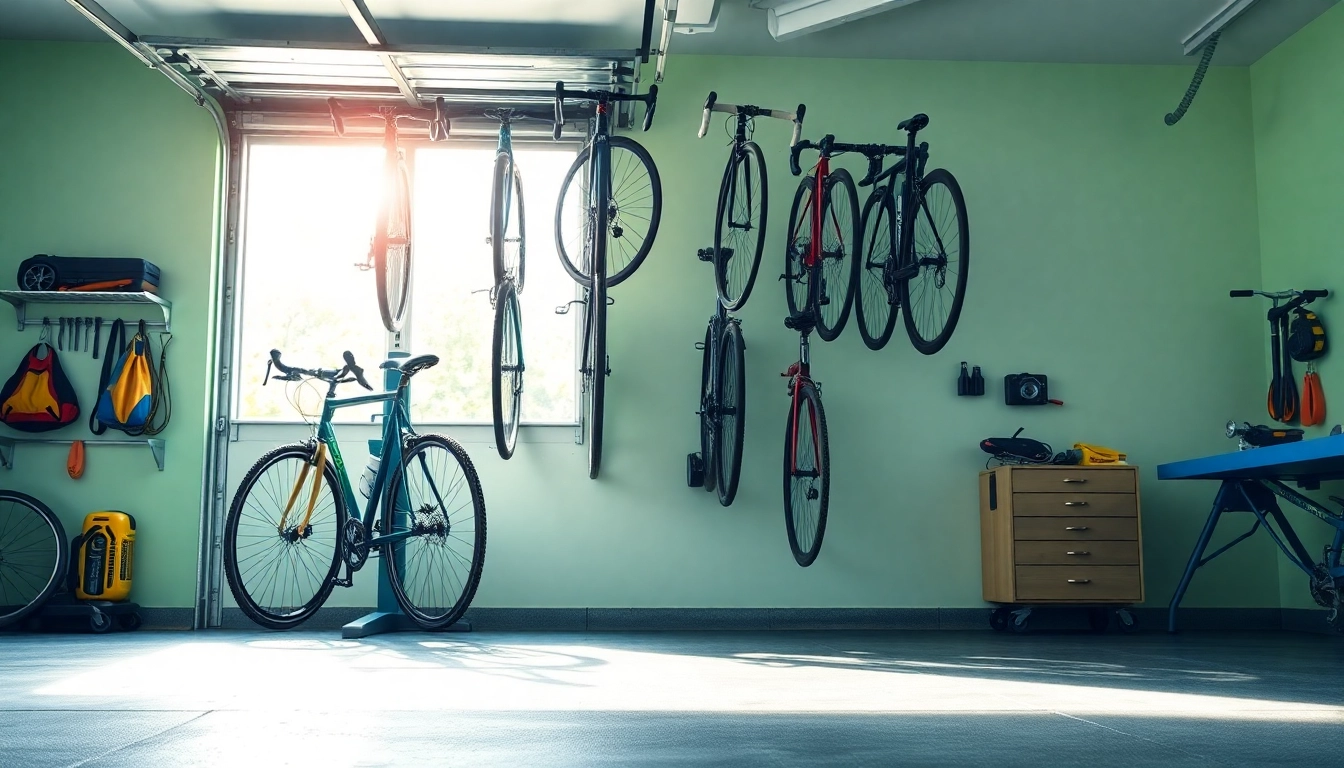Understanding Vertical Bike Racks
What is a Vertical Bike Rack?
Vertical bike racks are specialized storage solutions designed to hold bicycles in an upright position. This orientation minimizes the footprint required and often allows users to store multiple bikes without consuming much floor space. These racks are available in various styles, including freestanding, wall-mounted, and hitch-mounted variations, catering to both residential and commercial needs. The main objective of a Vertical bike rack is to provide a secure and efficient way to store bicycles, making them easily accessible and organized.
Key Features of Vertical Bike Racks
When considering a vertical bike rack, understanding its key features is essential to select the right one for your needs. Important features include:
- Capacity: Different racks support various numbers of bikes, from one to several.
- Materials: Common materials include steel and aluminum, which offer durability and longevity.
- Adjustability: Some models feature adjustable arms or bases to accommodate different bike shapes and sizes.
- Ease of Use: Features such as ramps, tilting mechanisms, or quick-release systems can significantly enhance user experience.
Benefits of Using a Vertical Bike Rack
Implementing a vertical bike rack comes with numerous benefits:
- Space Savings: Vertical orientation lets users maximize vertical space, perfect for garages or smaller homes.
- Ease of Access: By storing bikes upright, users can quickly grab their bikes when needed.
- Reduced Damage: Properly designed vertical racks minimize the risk of scratches and damage to bicycles compared to laying them flat.
- Organization: Keeping bikes standing allows for better management of equipment and accessories, reducing clutter.
Types of Vertical Bike Racks
Freestanding vs. Wall-Mounted Vertical Bike Racks
Freestanding vertical bike racks do not require installation and can be placed anywhere on a flat surface. Their mobility is a significant advantage, especially for those who may move or rearrange their space often. These racks are ideal for indoor storage areas, temporary setups, or for individuals unsure about permanent installation.
On the other hand, wall-mounted vertical bike racks require mounting on a wall, providing a more permanent solution that saves floor space. These racks can hold one or more bikes and are particularly useful in garages or outdoor bike storage sheds. Wall-mounted options often have a streamlined design, enhancing aesthetics while providing functionality.
Hitch-Mounted Vertical Bike Racks
Hitch-mounted vertical bike racks attach to the receiver hitch on a vehicle, offering a convenient option for transporting bikes. They can carry multiple bikes and are particularly popular among families or groups who bike together. One of the main advantages is that they keep the bikes elevated off the ground, making them less susceptible to damage from road debris. Some hitch racks also come with features such as tilt or swing-away mechanisms to allow for easy access to the trunk or rear of the vehicle.
Indoor Vertical Bike Racks
Indoor vertical bike racks provide effective storage solutions for apartments and homes, where space is often limited. These racks allow bike owners to display their bicycles like art pieces while keeping them secure and organized. Many indoor racks are designed with aesthetic considerations in mind, providing a range of styles and finishes to match the décor of a living space.
Choosing the Best Vertical Bike Rack for Your Needs
Factors to Consider When Selecting a Vertical Bike Rack
Choosing the right vertical bike rack requires examining several factors:
- Available Space: Measure the area where you plan to install or place the rack to ensure a good fit.
- Number of Bikes: Consider how many bikes you need to store and select a rack that meets that capacity.
- Bike Types: Different bikes require different support; ensure the rack can accommodate road bikes, mountain bikes, and e-bikes.
- Security Features: Look for racks that include locking mechanisms or are compatible with locks to protect your investment.
How to Measure Your Space for a Vertical Bike Rack
To accurately measure your space, follow these steps:
- Clear the area where you intend to place the rack.
- Measure the height, width, and depth of the available space.
- Consider clearance needed for bike handlebars and accessories.
- If using a wall-mounted rack, note the height at which you plan to mount it, ensuring it is convenient for use.
Compatibility with Different Bike Types
When selecting a rack, ensure it’s compatible with various bike types and sizes:
- Road Bikes: Generally lighter with thinner frames, but ensure the rack can accommodate their specific sizes.
- Mountain Bikes: These bikes often have wider tires, so choose a rack that can support their dimensions.
- E-Bikes: With their added weight and unique frames, confirm that the selected rack can handle e-bikes securely and safely.
Installation and Maintenance Tips for Vertical Bike Racks
Step-by-Step Installation Guide for Vertical Bike Racks
Each vertical bike rack will have its unique installation guide, but here are general steps to follow:
- Gather necessary tools (drill, screws, level, etc.) based on the type of rack.
- Follow the instructions provided by the manufacturer to assemble any parts if needed before installation.
- If wall mounting, mark the position on the wall based on your measurements and use a level to ensure straight installation.
- Drill pilot holes if necessary and securely attach the rack to the wall.
- For freestanding racks, position the rack in its designated spot and ensure it is stable.
- Test the rack by loading it with the bike(s) to ensure stability.
Regular Maintenance for Longevity of Your Vertical Bike Rack
To ensure the longevity of your vertical bike rack, follow these maintenance tips:
- Regularly check anchor points and fasteners to ensure they are tight and secure.
- Inspect any moving parts or hinges for wear and tear, lubricating if necessary.
- Clean the rack periodically to prevent rust or dirt build-up, especially after outdoor use.
Common Issues and Troubleshooting
When utilizing a vertical bike rack, various issues can arise:
- Stability Issues: If the rack feels unstable, review the installation steps to ensure proper securing and balance.
- Bikes Scratching: Ensure there’s sufficient padding where bikes make contact with the rack, and play close attention to securing the bike correctly.
- Weight Limits Exceeded: Always adhere to the manufacturer’s guidelines regarding weight limitations to avoid accidents or damages.
Maximizing Space Efficiency with a Vertical Bike Rack
Organizing Your Garage with a Vertical Bike Rack
Using vertical bike racks in your garage can dramatically improve organization. Consider the following tips:
- Position the rack near the garage door for easy access when heading out.
- Label different sections or areas for various bike types or family members.
- Utilize hooks or additional shelves above the rack for bike accessories, helmets, or tools.
Vertical Bike Racks for Small Spaces
People in small apartments or homes can greatly benefit from vertical bike racks due to their space-saving design. Look for options that are compact yet sturdy, maximizing both floor and wall space. Alternatively, consider models that double as furniture or decorations, thereby serving dual purposes in limited areas.
Creative Storage Solutions Using Vertical Bike Racks
Innovative uses of vertical bike racks include:
- Using multiple racks to create a custom bike display.
- Incorporating under-shelf storage for tools or maintenance supplies directly onto the vertical rack structure.
- Setting racks in communal spaces for shared bike storage, promoting an organized community initiative.



